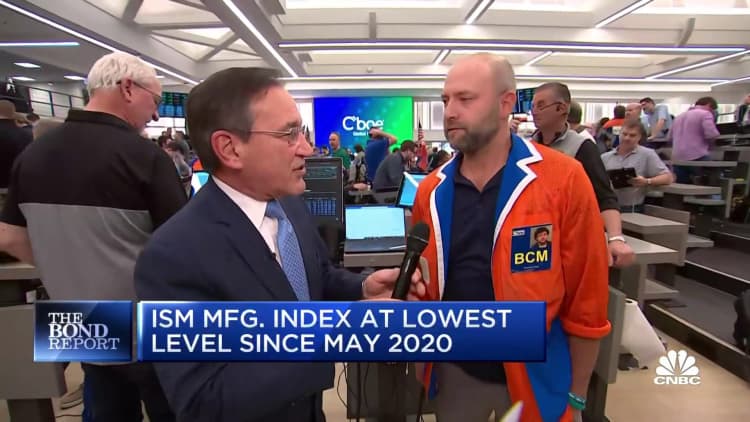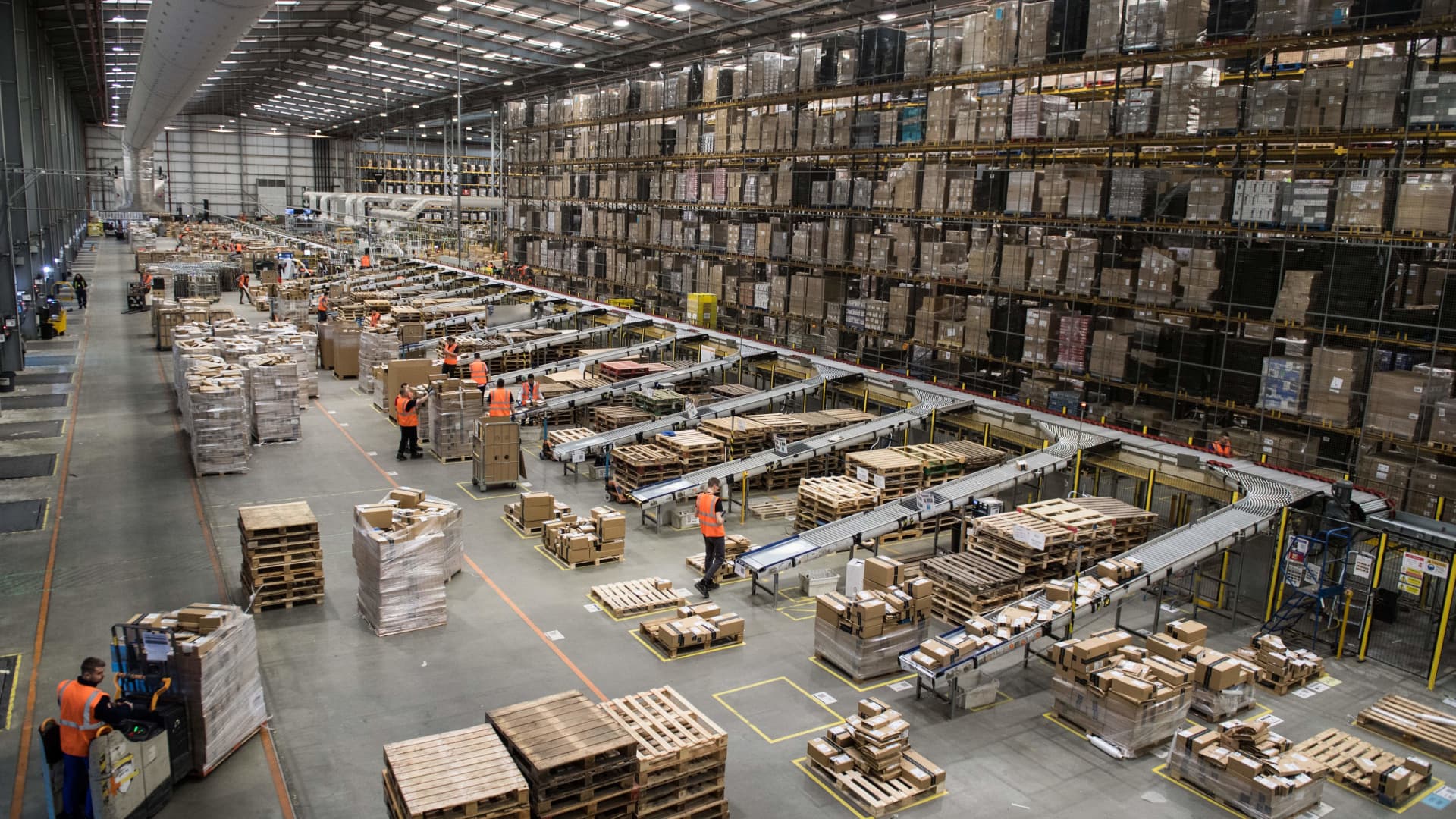CHRIS J RATCLIFFE | AFP | Getty Images
Bloated warehouse inventories are an expensive pressure eating away at the bottom line of many companies, and for many, the excess supply and associated costs of storage won’t abate this year, according to a new CNBC Supply Chain Survey.
Just over one-third (36%) said they expect inventories to return to normal in the second half of this year, with an equal percentage expecting the gluts to last into 2024 — 21% saying a return to normal can occur in the first half of the year, and another 15% expecting normal activity by the first half of 2024. But uncertainty about inventory management is significant, with almost one-quarter (23%) of supply chain managers saying they are not sure when gluts will be worked off.
“We don’t expect significant decreases in inventory levels within our network in 2023,” said Paul Harris, vice president of operations for WarehouseQuote. “Several of our manufacturing clients are experiencing dead/bloated inventory challenges due to over-ordering in the container grid-lock from prior quarters. A majority have elected to keep the inventory on hand and are opposed to liquidating.”
A total of 90 logistics managers representing the American Apparel and Footwear Association, ITS Logistics, WarehouseQuote, and Council of Supply Chain Management Professionals (CSCMP) participated in the survey between March 3-21 to provide information on their current inventories and the biggest inflationary pressures they are facing, and often passing onto the consumer.
What’s sitting in warehouses, and what companies are doing about it
Logistics experts tell CNBC 20% of their excess inventory sitting in warehouses is not seasonable in product nature. Slightly more than half of survey participants said they would keep the items in warehouses. But a little over one-quarter (27%) said they are selling on the secondary market because inventories impact a company’s bottom line through elevated storage prices.
Harris told CNBC many clients with perishable goods are selling them on secondary markets to avoid destroying products. “However, if a secondary market is not an option, they are forced to destroy the product,” he said. “If it’s a consumable, they are donating the goods to take tax deductions.”
Investors are worried about the earnings and margin trends and expect Wall Street to revise estimates lower. The supply chain pressures will be among the factors that weigh on quarterly numbers.
“Inventory carrying costs continue to rise, driven by inflationary pressures and late shipments,” said Mark Baxa, CEO of CSCMP. “This means that with every day that passes, three things are happening … growing sales risk, margin pressure, and D&O [deteriorated and/or obsolete].”
Almost half surveyed said the biggest inflationary pressures they are paying are warehouse costs followed by the other category, which includes rent and labor.
ITS Logistics told CNBC that many clients across industries have been using ocean containers, rail containers, and 53-foot trailers for storage because distribution centers were full.
“These charges will start materializing in Q2 or Q3 financial results,” said Paul Brashier, vice president of drayage and intermodal at ITS Logistics.
The survey found 50% of respondents saying the average length of time they are using ocean containers for storage is over four months.
“We are seeing similar trends in our data and ecosystem,” Brashier said.
More inflation costs going to the consumer
Traditionally, warehousing costs and the associated labor costs are passed onto the consumer, increasing or sustaining the price of a product. Nearly half (44%) of survey respondents said they are passing on at least half of their increased costs, if not more, to consumers.
“It’s clear that supply chain challenges and all their associated costs continue to stir inflationary pressures,” said Stephen Lamar, president, and CEO of the American Apparel & Footwear Association. “Given ongoing inventory concerns and the fragile nature of our logistics system, there are other pressures and uncertainty.”
His group is calling for West Coast port labor negotiations to be quickly finalized and for the government to “aggressively remove other cost pressures,” a reference to Section 301 tariffs on Chinese imports, which he said continue to make supply chains more expensive.
Manufacturing orders and the economic outlook
Recent data on manufacturing has shown a deterioration in the economy, with the ISM Manufacturing index in contraction level based on March data released this week. The U.S. services sector slipped closer to contraction in March, according to the ISM Services Index, with sharp declines in new orders, exports and price.
Looking at the health of manufacturing orders for the next three months, 40% of logistics managers surveyed said they are not cutting orders, while a little under one-fifth (18%) said they are cutting orders by 30%.
Inventory levels and consumer consumption are two factors influencing manufacturing orders.
These orders help gauge China GDP as it reopens from its strict Covid protocols since the county relies on manufacturing and trade for its economic growth.
FreightWaves SONAR intelligence shows an uptick in ocean freight orders and recovery from the massive drop ahead of Chinese New Year, but the longer trend line remains a decrease in ocean bookings.
Even with orders increasing, the inventory headwinds are a source of concern for logistics experts.
“This survey confirms that we remain in an era of serious supply chain cost-to-serve challenges,” Baxa said. “Warehousing costs are contributing to these challenges that shippers are facing today and on the road ahead.”
FreightWaves and ITS Logistics are CNBC Supply Chain Heat Map data providers.


